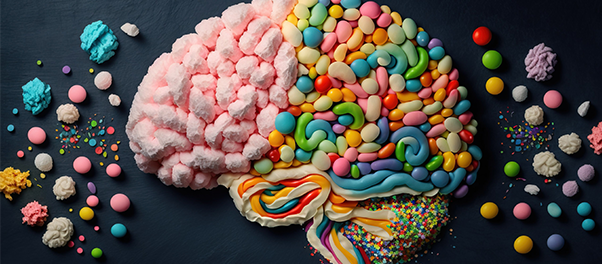Sugar. It’s sweet, addictive, and almost impossible to avoid. From your morning coffee to your evening snack, sugar has quietly woven itself into nearly every corner of modern life. Yet, behind its comforting taste lies a truth that many of us overlook — one that directly affects our health, mood, and long-term well-being.
In this article, we’ll explore the hidden sources of sugar, how it impacts your body and brain, and most importantly, how to make smarter choices without giving up life’s little pleasures.
Table of contents
- 1. The Ubiquity of Sugar in Modern Diets
- 2. The Different Names for Sugar
- 3. How Sugar Affects Your Body
- 4. The Hidden Sugar Traps in Everyday Foods
- 5. Natural vs. Added Sugar: The Key Distinction
- 6. The Link Between Sugar and Major Health Problems
- 7. Why Sugar Is So Addictive
- 8. How to Spot and Reduce Hidden Sugars
- 9. The Psychological Side of Sugar
- 10. How to Transition to a Lower-Sugar Lifestyle
- 11. The Benefits of Cutting Back
- 12. A Balanced Approach: Sweetness Without Guilt
- 13. The Future of Sugar Awareness
- Conclusion: Taking Back Control of Your Sweet Life
1. The Ubiquity of Sugar in Modern Diets
It’s easy to assume that sugar only comes from candy, cakes, and desserts. But in reality, sugar has found its way into foods we would never suspect — salad dressings, pasta sauces, soups, breakfast cereals, granola bars, even “healthy” yogurt.
Manufacturers often add sugar for flavor, preservation, or texture. This means that even when you think you’re eating something healthy, you might be consuming more sugar than you realize. For instance:
- A single cup of flavored yogurt can contain as much sugar as a candy bar.
- A bottle of sweetened iced tea may have up to 8–10 teaspoons of sugar.
- A bowl of breakfast cereal marketed as “whole grain” or “energy-boosting” might deliver up to 20 grams of sugar in one serving.
According to the World Health Organization (WHO), the average adult should consume no more than 25 grams (6 teaspoons) of added sugar per day. But most people easily exceed this, often without realizing it.
2. The Different Names for Sugar
If sugar were labeled clearly, avoiding it would be easy. But it hides under dozens of aliases on ingredient lists — sometimes sounding almost scientific or harmless.
Here are just a few common names for sugar you might find on packaging:
- Sucrose
- Glucose
- Fructose
- Maltose
- Dextrose
- High-fructose corn syrup
- Cane juice
- Agave nectar
- Malt syrup
- Brown rice syrup
- Fruit juice concentrate
- Molasses
Each of these names means added sugar, and your body treats them all essentially the same way. Whether it comes from a soft drink or a bottle of “organic honey,” sugar is still sugar once it enters your bloodstream.
3. How Sugar Affects Your Body
a. The Blood Sugar Rollercoaster
When you consume sugar, your blood glucose spikes rapidly. In response, your pancreas releases insulin to bring those levels down. This sudden spike and crash often leave you feeling tired, irritable, and craving even more sugar.
Over time, frequent spikes can lead to insulin resistance, a precursor to type 2 diabetes. It’s not just about the calories — it’s about how your body’s hormonal balance gets disrupted.
b. Fat Storage and Weight Gain
Excess sugar that isn’t immediately used for energy gets converted into fat. This is particularly true for fructose, which is metabolized in the liver. Overconsumption of fructose can lead to fatty liver disease, obesity, and metabolic syndrome.
Studies show that people who drink one or more sugary beverages daily have a 25% higher risk of developing obesity or heart disease compared to those who rarely do.
c. Inflammation and Immune Function
Sugar triggers inflammation throughout the body. Chronic inflammation has been linked to a variety of health conditions, including arthritis, heart disease, and even cancer.
Moreover, sugar can suppress immune function. After a sugary snack, white blood cells become less effective at fighting bacteria, leaving you more vulnerable to infections.
d. Brain and Mood Effects
Ever notice how a sugar rush can boost your mood temporarily — followed by a sudden slump? That’s because sugar increases dopamine levels, creating a temporary “high.”
Over time, your brain craves this stimulation, similar to how it responds to addictive substances. This cycle can contribute to emotional eating, fatigue, and even mood disorders.
4. The Hidden Sugar Traps in Everyday Foods
Many people focus on desserts as the main source of sugar, but the real culprits often lie in packaged and processed foods. Let’s look at where sugar hides:

a. Breakfast Foods
- Granola and cereal bars labeled “natural” or “fit” can contain 10–15 grams of sugar per serving.
- Instant oatmeal packets often have added brown sugar, maple flavoring, or fruit syrups.
- Even “whole grain” cereals can be 30% sugar by weight.
b. Beverages
One of the largest contributors to added sugar in modern diets is liquid sugar.
- A 12-ounce soda contains about 39 grams of sugar — that’s nearly 10 teaspoons!
- Energy drinks and sweetened coffees can be even higher.
- Fruit juices, though perceived as healthy, often contain as much sugar as soda.
c. Sauces and Dressings
Ketchup, barbecue sauce, teriyaki, and salad dressings are major sugar offenders. Just two tablespoons of ketchup can contain 8 grams of sugar.
Many low-fat dressings compensate for flavor loss by adding sugar — making them less healthy than their full-fat versions.
d. Breads and Condiments
Yes, even bread contains sugar. Many commercial breads use sugar to speed up fermentation and improve taste. And spreads like peanut butter, jams, and “nutella-style” creams can add hidden sugars that quickly add up.
5. Natural vs. Added Sugar: The Key Distinction
It’s important to note that not all sugar is harmful. Naturally occurring sugars found in fruits, vegetables, and dairy are accompanied by fiber, vitamins, and minerals, which slow down absorption and reduce harmful spikes in blood sugar.
For example:
- An apple has sugar, but also fiber, water, and antioxidants.
- Milk contains lactose, but also protein and calcium.
The problem begins when sugar is added artificially — stripped of nutrients, leaving only empty calories. Added sugars provide energy without any nutritional value, making them a major contributor to obesity and metabolic disorders.
6. The Link Between Sugar and Major Health Problems
a. Diabetes
The connection between sugar and diabetes is well-documented. Consistently high sugar intake forces the pancreas to produce more insulin. Over time, cells become less sensitive to it, leading to insulin resistance and eventually type 2 diabetes.
b. Heart Disease
Research has shown that excessive sugar consumption increases triglycerides, lowers good HDL cholesterol, and raises blood pressure — all risk factors for heart disease.
One study published in JAMA Internal Medicine found that people who consumed 17–21% of their calories from added sugar had a 38% higher risk of dying from cardiovascular disease.
c. Cancer
While sugar itself doesn’t directly cause cancer, a high-sugar diet creates an environment that promotes inflammation and insulin spikes, which may accelerate cancer cell growth.
Cancer cells thrive on glucose, and diets high in sugar may increase the likelihood of certain cancers, particularly breast, colon, and pancreatic cancers.
d. Cognitive Decline
Excess sugar can impair memory and learning. Studies link high blood sugar levels with Alzheimer’s disease and dementia, leading some researchers to refer to Alzheimer’s as “type 3 diabetes.”
e. Dental Health
This one’s obvious — sugar fuels bacteria in your mouth that produce acids, eroding enamel and causing cavities. But what’s less known is that even “healthy” snacks like dried fruits can stick to teeth and have similar effects.
7. Why Sugar Is So Addictive
Sugar activates the reward center of the brain, releasing dopamine and serotonin — chemicals associated with pleasure and comfort. Over time, your brain requires more sugar to achieve the same feeling of satisfaction.
This explains why people crave desserts after meals or experience “withdrawal” symptoms when cutting back. The good news? The brain can retrain its reward pathways. After a few weeks of reduced sugar intake, natural foods start to taste sweeter again.
8. How to Spot and Reduce Hidden Sugars
Awareness is your most powerful weapon. Here’s how you can start reducing sugar without feeling deprived:
a. Read Labels Carefully
Look beyond the word “sugar.” Check the nutrition label for total sugars and added sugars separately. Ingredients are listed in order of quantity — so if sugar (or its alias) is near the top, that product is high in sugar.
b. Choose Whole Foods
Stick to foods in their most natural form — fruits, vegetables, grains, and proteins. Whole foods contain fiber and nutrients that balance natural sugars.
c. Limit Processed Foods
If it comes in a box, can, or bottle, it probably contains added sugar. Cooking from scratch gives you full control over what goes into your meals.
d. Swap Sweet Drinks for Healthier Options
Replace soda or juice with water infused with lemon, mint, or cucumber. Herbal teas or sparkling water with fruit slices are great alternatives.
e. Don’t Be Fooled by “Healthy” Labels
Terms like “organic,” “low-fat,” “natural,” or “no refined sugar” can be misleading. Organic sugar is still sugar, and “low-fat” products often add sugar to make up for lost flavor.
f. Satisfy Cravings Smartly
Craving something sweet? Opt for naturally sweet snacks like fruits, dates, or dark chocolate (70% or higher cocoa). Over time, your palate adjusts, and artificial sweetness will start to taste overly intense.
9. The Psychological Side of Sugar
Sugar is not just a physical craving — it’s deeply emotional. Many people use sugar as a comfort tool for stress, sadness, or boredom.

However, emotional eating can create a cycle of guilt and fatigue. Mindful eating practices can help break this cycle:
- Pause before eating and ask, “Am I truly hungry, or am I seeking comfort?”
- Eat slowly, enjoying the flavor and texture of your food.
- Keep sugary snacks out of sight to reduce temptation.
By understanding the emotional triggers behind your cravings, you can develop a more balanced relationship with food.
10. How to Transition to a Lower-Sugar Lifestyle
Quitting sugar overnight can feel daunting. Instead, aim for gradual reduction:
- Start small — reduce sugar in your coffee or tea by half.
- Replace refined sweets with fruits.
- Experiment with spices like cinnamon, nutmeg, or vanilla to add natural sweetness.
- Cook at home more often. Homemade meals usually have far less sugar.
- Plan your snacks — having nuts, yogurt, or fruit handy helps prevent impulse buys.
- Hydrate — dehydration can sometimes be mistaken for sugar cravings.
Remember: it’s not about perfection, but progress. Even reducing sugar by 20–30% can have noticeable effects on your energy, skin, and focus.
11. The Benefits of Cutting Back
The rewards of reducing sugar go far beyond weight loss. Within weeks, people often report:
- More stable energy levels
- Clearer skin
- Better sleep quality
- Improved mood and focus
- Reduced bloating and inflammation
Long-term, your risk for diabetes, heart disease, and obesity decreases dramatically. You’ll not only feel better — you’ll be adding healthy years to your life.
12. A Balanced Approach: Sweetness Without Guilt
It’s important not to demonize sugar completely. Food is meant to be enjoyed. The key is moderation and awareness. Enjoying a dessert on a special occasion or a piece of chocolate after dinner won’t derail your health — as long as it’s not an everyday habit.
As nutritionists often say:
“It’s not what you eat occasionally that harms you — it’s what you eat consistently.”
13. The Future of Sugar Awareness
Globally, awareness is rising. Governments are introducing sugar taxes, new food labeling laws, and campaigns to reduce consumption. Beverage companies are reformulating products, and the demand for natural sweeteners like stevia and monk fruit is growing.
Yet, the real change begins with individual awareness. The more consumers understand where sugar hides, the more they can make choices that align with their health goals.
Conclusion: Taking Back Control of Your Sweet Life
Sugar isn’t the enemy — ignorance is. The problem isn’t enjoying a sweet treat now and then; it’s the silent, excessive sugar that creeps into our daily diets, draining our energy and undermining our health.
By learning to read labels, making mindful choices, and finding joy in whole, naturally sweet foods, you can reclaim your health — one mindful bite at a time.
Reducing sugar is not about deprivation; it’s about freedom — freedom from cravings, fatigue, and mood swings. When you balance sweetness in your diet, you also bring balance to your body and mind.
